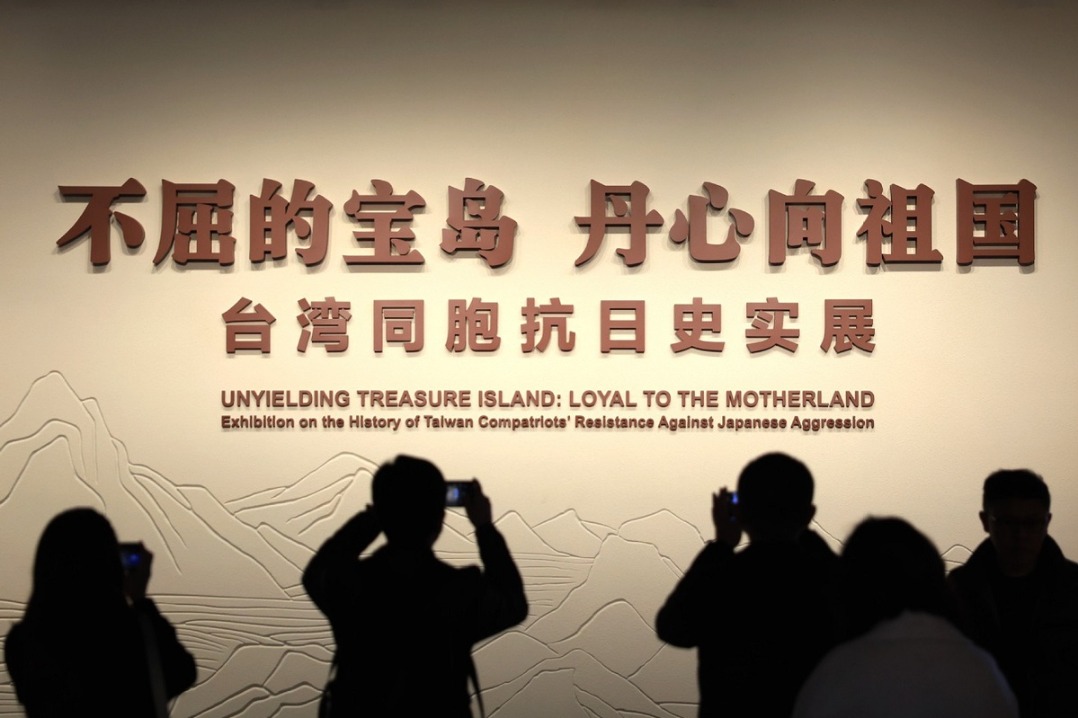Meaningful connection
By transforming Laos into a land-linked country, the Laos-China Railway has great potential to help boost regional development

By transforming Laos into a land-linked country, the Laos-China Railway has great potential to help boost regional development

The COVID-19 pandemic has had significant impacts on the economy, social activities, and various projects over the past two years, both in Laos and other countries in the world. However, the Laos-China Railway project has successfully commenced operations as scheduled on Dec 2, 2021, coinciding with the commemoration of the 46th anniversary of the establishment of the Lao People's Democratic Republic.
The railway, stretching more than 1,000 kilometers, connects China's southwestern city of Kunming to the Laos capital Vientiane. The project has further strengthened and deepened the relationship between the two nations. The project serves as a significant strategic connection between the two countries, transforming the landlocked country of Laos into a land-linked nation, aligning it with the Belt and Road Initiative as a component of the gradual implementation of the Laos-China Economic Corridor.
Recognizing the significance of this endeavor, the political entities and governmental bodies of both Laos and China reached a consensus to undertake the construction of the Laos-China Railway project. To ensure the efficient and effective implementation of the project, a collaborative effort led to the establishment of the Laos-China Railway Company Limited. This entity is characterized by a shareholding structure in which the government of Laos possesses 30 percent of the shares and the Chinese government possesses 70 percent of the shares.
It is estimated that the railway will yield an internal rate of return of approximately 6.3 percent based on the findings of the economic and technical feasibility studies. It is important to note that while the direct return rate may not be considered high in comparison to typical business investment projects, it is deemed a standard rate of return when compared to large-scale infrastructure investment projects.
The project is generating both direct and indirect benefits not only for Laos and China, but also neighboring countries.
The railway is a significant infrastructure investment with great potential to foster the growth and development of various sectors and businesses, thereby enhancing the quality and pace of economic growth in Laos. It has the capacity to position Laos as a regional transportation hub, facilitating efficient and expedited import-export activities, accommodating large volumes of goods, mitigating risks, lowering transportation/logistic costs, alleviating congestion on highways, reducing fuel imports, curbing pollution, and providing operators and passengers with increased alternatives. Also, the utilization of abandoned land has been effectively implemented to generate positive outcomes, particularly in terms of fostering community development within the corridor and adjacent to train stations. The objective is to generate employment opportunities during both the construction phase and the operational phase of the service. By means of the project, Lao people are progressively acquiring skills and expertise in the fields of construction and administration, which will help Laos attract more investment and facilitate the growth of trade volume. The potential to draw a larger number of tourists from neighboring countries and worldwide is evident. There are also several potential sources of revenue within the realm of logistic services, including but not limited to warehouse rental, cargo transportation, insurance coverage, customs duties, taxes, fees and various administrative expenses.
According to a report by the Laos-China Railway Company, the transportation of passengers and goods is experiencing significant growth, with "China's Responsibility" serving as a catalyst for economic dynamism. From December 2021 to April 2022, the cumulative number of passengers transported was 14.43 million. As of May 2022, the aggregate volume of goods transported along the aforementioned route had surpassed 20 million metric tons. Of this, the cross-border freight volume exceeded 4 million tons, with a corresponding value of 17.7 billion yuan ($2.5 billion). In the first quarter of 2023, there was a significant year-on-year increase of 274.4 percent in the import and export freight volumes of the Laos-China Railway.
The railway is playing a significant role in fostering the economic development of Laos. The Chinese railway department is currently prioritizing the growing demand for freight transportation to and from China along the Laos-China Railway line. To address this, they are implementing measures to increase tonnage capacity. Additionally, they are actively exploring the expansion of freight by integrating the Laos-China Railway with the China-Europe Railway Express and the Western Land-Sea New Corridor Train. These initiatives aim to facilitate the continuous growth of freight transportation along the Laos-China Railway.
The Laos-China Railway has generated tangible opportunities and benefits for both enterprises and individuals residing along its route. This infrastructure project has significantly enhanced regional connectivity and fostered mutual advantages, thereby imparting substantial momentum to the economic and social progress of Laos, the Association of Southeast Asian Nations and China.
The Laos-China Railway serves as a symbol of prosperity, happiness, and friendship, showcasing the robust vitality and impact of the collaborative efforts in constructing the Belt and Road Initiative. It stands as a tangible manifestation of the endeavor to establish a global community with a shared future for humanity.
It is expected that the implementation of the project will result in a decrease in transportation and logistics expenses, consequently establishing Laos as a prominent regional transportation center/logistic hub. Moreover, it is expected that this initiative will facilitate the progression of human capital and make a positive contribution to the broader socioeconomic progress of the country, thereby augmenting its overall quality. Furthermore, it is believed that the project will enhance the profile of Laos on the global stage.
Sithixay Xayavong is the director of the Research and Academic Service Office and the director of the Chinese Studies Centre at the National university of Laos. Kesone Kanhalikham is a deputy head of division at the National University of Laos Council and a researcher in urban development and Chinese investment in Laos. The authors contributed this article to China Watch, a think tank powered by China Daily.
Contact the editor at editor@chinawatch.cn.

































